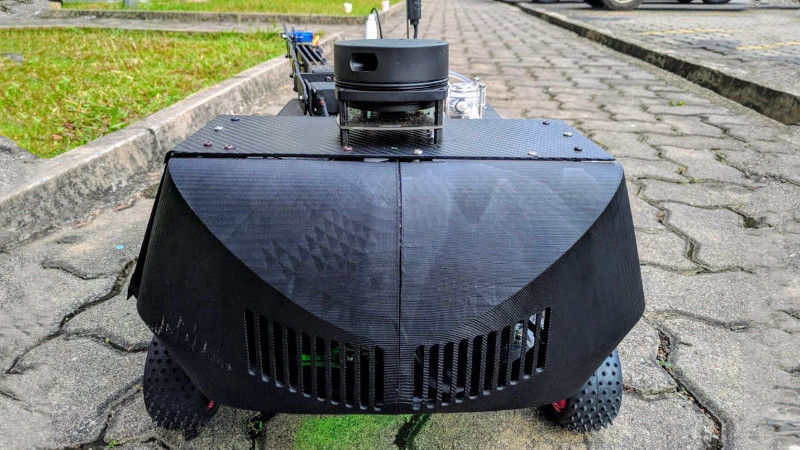Automation is a lofty goal in many industries, but not always straightforward to execute. Welding car bodies in the controlled environment of a production line is relatively straightforward. Maintaining plants in a greenhouse, however, brings certain complexities due to the unpredictable organic processes at play. Hexagrow is a robot that aims to study automation in this area, developed as the final year project of [Mithira Udugama] and team.
The robot’s chassis is a very modern build, consisting of carbon fiber panels and 3D printed components. This kind of strength is perhaps overkill for the application, but it makes for a very light and rigid robot when the materials are used correctly.

It’s the sensor package where this build really shines, however. There’s the usual accoutrement of temperature and humidity sensors, and a soil moisture probe, as we’d expect. But there’s more, including an impressive soil pH tester. This involves a robotic arm with a scoop to collect soil samples, which are then weighed by a load cell. This is then used to determine the correct amount of water to add to the sample. The mixture is then agitated, before being tested by the probe to determine the pH level. It recalls memories of the science packages on Mars rovers, and it’s great to see this level of sophistication in a university project build. There’s even a LIDAR mounted on top for navigation purposes, though it’s not clear as to whether this sensor is actually functionally used at this point in development.
Plants can be demanding of their caretakers, so perhaps you’d best check you’re measuring your soil moisture correctly? Video after the break.
[Thanks to Baldpower for the tip!]

















“It recalls memories of the science packages on Mars rovers, and it’s great to see this level of sophistication in a university project build. ”
I could see farmers paying for something like this. May not buy many, but many wouldn’t be needed.
Thank you
Are they going to name them Huey, Duey and Louie like they did in ‘Silent Running’?
Man, that was a good bad movie!
Yup, one of my favorite “good, bad movies”.
So Louie is going to get carried away by a tornado?
You know, I’ve been probing the market for greenhouse automation and here’s what I forgot from my youngster days on the farm: farming isn’t terribly profitable, so farmers are inevitably forced to DIY and jury rig everything. Everything from clogged carburetors and broken blades to delivering a baby animal and maintaining food safe plumbing alongside splattering cow poop. Doesn’t matter the product, the ones that don’t go under are the ones that know how to do more with less.
Farming is certainly a minimalist endeavour, but, there are a lot of hobby farmer (people that some might say have more money the sense) who would love this and could afford it. Let them pay the development cost so that the final product could be mass produced cheaply.
And, yes, I want one to do my garden
Looks like a bugs worst nightmare. Can I get one for stinkbugs at home? The last few days of mellow weather brings out the BMSBs.
Something like this could be useful to many, around the year 2030. Warmer climate, and plenty of CO2 for the plants, not to mention higher prices and chaotic carbon economy, think many will be looking to grow their own food. I’ve tried a few times, and fail every time in my backyard. Maybe indoor gardening would be better around here, or really a bigger piece of land to work with. Should be interesting times, global warming, and GMO food crops.
Well done dude! Great to see someone from Sri Lanka appear hear. Even better someone from the same university I was in :)
Thank you bro
The vehicle looks like the Black Knight from Monty Python and the Holy Grail
Thank you all for the comments. Much appreciated
Dear Levin Day
This is work of a research team at Sri Lanka Institute of Informaion Technology, headed by me. Would you please update with correct information. If you proved contact details, I will send all important information related to our robot.